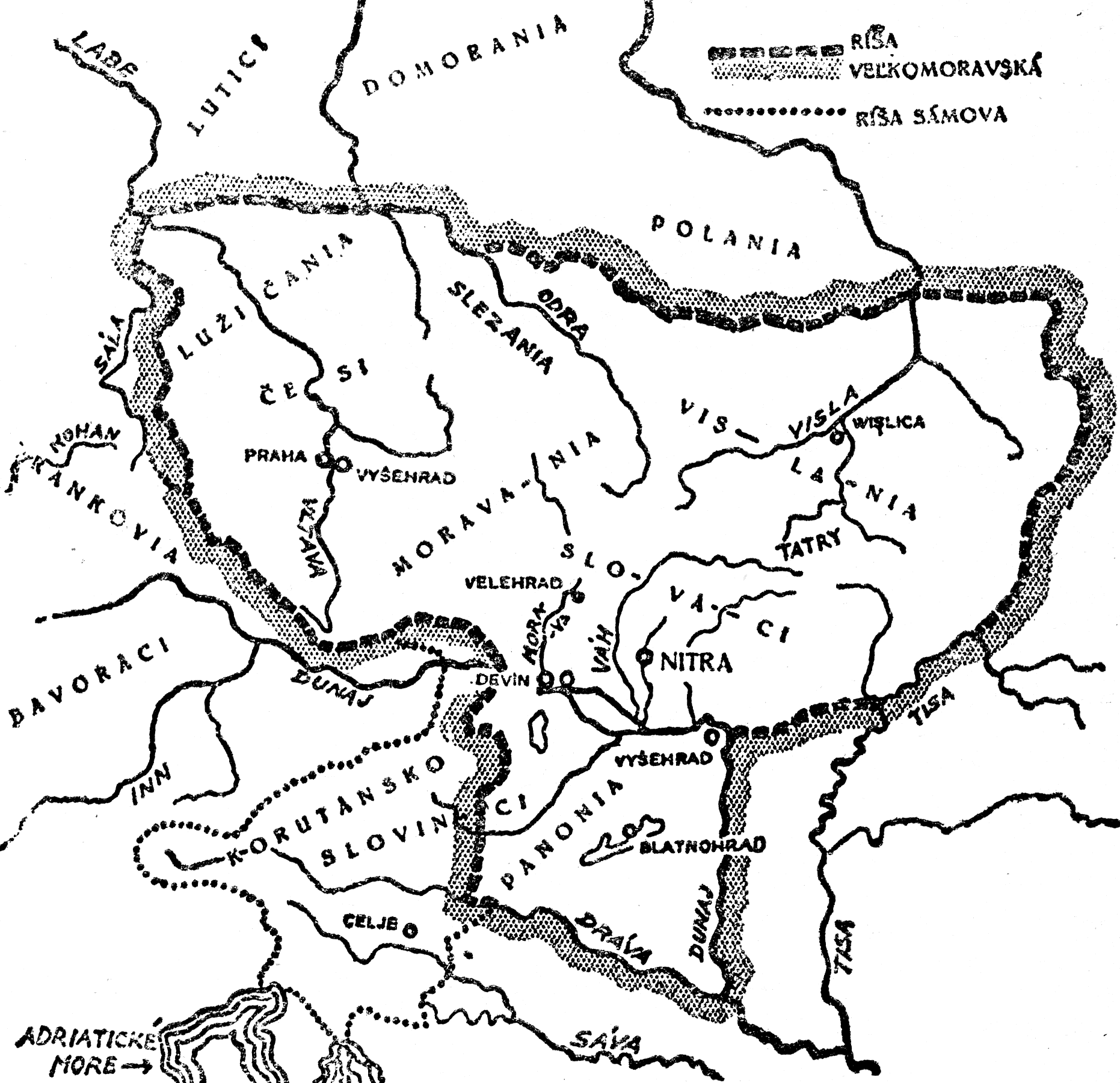The Great Moravian Empire
Moravia is now part of the Czech Republic, bordering Slovakia. It is home to Brno, the second-largest city in the country. It hardly seems likely that this region could have been powerful or influential – but it was.
The Beginning
A leader by the name of Mojmír I founded the empire around the year 830. He brought together two principalities, the Principality of Nitra and the Principality of Moravia. The center of the empire lay along the Morava River, in the present-day Czech Republic and Slovakia, but is extended to include what is now Hungary, as well as parts of Poland, Serbia, Ukraine, Austria, Germany, Croatia, and Slovenia. At the time of its founding and for some years afterward, Great Moravia was a vassal state of the Frankish; however, Mojmír attempted to secede from East Francia in 846. He was promptly deposed and his nephew, Rastislav, ascended to the throne, with the help of King Louis the German.
A New Ruler
Rastislav had, it seems, many of the same opinions as his uncle. He sought to weaken the influence of the Frankish priests practicing in Great Moravia. As part of this plan, he contacted Byzantine Emperor Michael III and asked for missionaries to be sent to teach Christianity in the Slavic language. Michael obligingly sent the brothers Cyril and Methodius, who would have a lasting impact on the language and the alphabet in which it was written. Rastislav also built numerous fortifications during his reign. In 855, he repelled a Frankish attack, and while he was in power, Great Moravia had sufficient economic and military power to be equal to East Francia.

Rastislav Deposed
Rastislav gave his nephew, Svatopluk I, the Principality of Nitra. In 870, Svatopluk sided with the Franks and overthrew Rastislav. Rastislav was given to the Franks, who blinded him. However, Svatopluk had some difficulty in ridding the country of his former allies. When Svatopluk objected to the Franks occupying part of his territory, they took him, prisoner.
Uprising
A priest named Slavomír took up the cause and led a rebellion against the Franks. He was elected the new ruler of Great Moravia. The Franks released Svatopluk and sent him back to Moravia, accompanied by a large Bavarian group. Svatopluk had contacted Slavomír in secret; Slavomír allowed the former ruler to take charge once again and Svatopluk, now in command of the Moravian army, ambushed the Bavarians and freed the country of the Franks.
Growth
It was during Svatopluk’s reign that the empire grew to its greatest size, though no one can be entirely sure just how much territory it included. Cyril and Methodius had done their work well, and the Pope himself declared the area an ecclesiastical province, with Methodius as the top church official.
The End
Svatopluk I died in the year 894. His son Mojmír II became the King of Great Moravia. His other son, Svatopluk II, was Prince of Nitra. Unfortunately, both men wanted to have complete control over the entire empire. Great Moravia had long been at war with East Francia, and with the internal battles, the territories once administered by the empire (including Bohemia) were now able to free themselves. Furthermore, the Magyars gradually encroached upon the territory and eventually took over all the land that now belongs to the Slovak Republic. The western part was taken into the Frankish empire. The empire limped on into the 10th century. After the year 906, there are no further mentions of either Mojmír II or Svatopluk II. On July 4 and 5, 907, Magyar armies drove Bavarian forces out of the area; this is regarded as the end of the Great Moravian Empire. Bohemia, now no longer under the rule of Great Moravia, was ready for its own ruling house; this was the Přemyslid dynasty, which would have control for so many centuries.
Finding Great Moravia
Historians differ on many points. How much territory did the empire include? What sort of weapons did the men of Great Moravia use in battle? Where, exactly, was the empire founded? Where was the capital? Nobody can be certain of the location of the capital, but most historians agree that it was the tiny village of Mikulčice, now in South Moravia, almost on the border with Slovakia. It was a fortified village comprising several islands. The village of Kopčany in Slovakia, just across the border from Mikulčice, contains the only aboveground building definitively dated to the time of Great Moravia; a small church. All other constructions from the time are either underground or in ruins. Most people these days have never heard of the Great Moravian Empire. Though the empire existed for less than 100 years, it had a profound influence on Czech history. Cyril and Methodius are proof of that.



